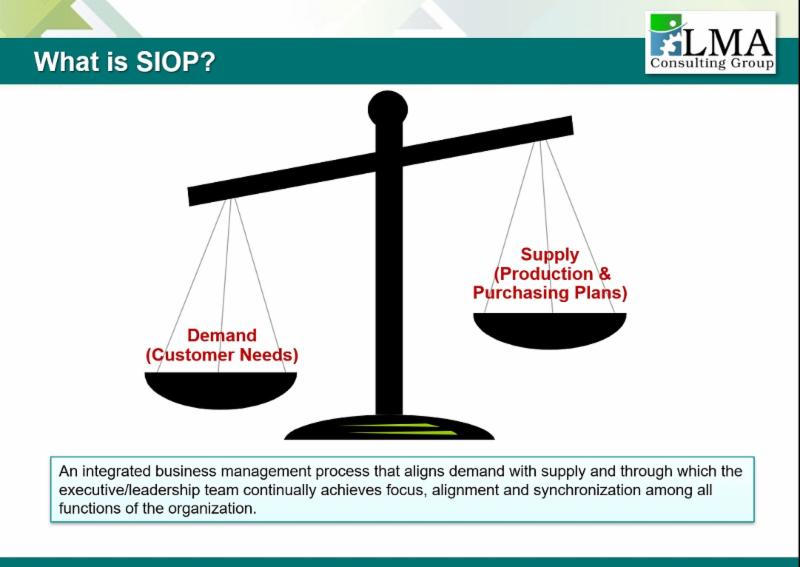According to a Hackett group study, the benefits of SIOP (Sales, Inventory & Operations Planning) can be dramatic. First, let’s back up to describe SIOP: It is an integrated business process that aligns demand with supply and through which the executive /leadership team continually achieves focus, alignment and synchronization among all functions of the organization. In our experience with over 20 SIOP projects, our clients have experienced these same results (and often even better ones), no matter the industry, company size or priority. Simply put, when done well, you’ll have more cash, profit and revenue. What’s not to like!
The types of results fall into three buckets:
- Working capital – Undoubtedly, freeing up inventory to increase cash flow is becoming a greater priority as executives realize just how much cash is tied up in servicing customers’ Amazon-like expectations with global supply considerations. Therefore, it is not surprising that we’ve received a serious uptick in requests to increase inventory turns. SIOP is always a part of the solution. Hackett research says 20-30% improvement is to be expected. We have certainly found this to be true.
- Cost reduction – whether we term this cost reduction or margin improvement, 5-10% improvement is what the Hackett study shows. We have seen these results, even by default (when the SIOP program was focused on improving service). Thus, if they can be achieved by default, they certainly can be achieved with focus! Items that fall into this category include material cost reduction, freight cost reduction, labor productivity improvement, and fixed cost optimization.
- Sales growth – According to the study, a 2-4% improvement is not uncommon. We have experienced dramatic results in this area with lead time reduction, on-time delivery performance improvement, customer scorecard wins and strengthened partnerships that lead to new and expanded sales opportunities.
For example, in a significant metals-related aerospace business, we started the SIOP journey to reduce inventory levels to free up debt. By partnering with sales to better understand customer requirements and by better aligning the sites on a single plan and set of priorities, we were able to align demand with supply. It was truly about alignment as the performance measurements couldn’t be completely changed (and they often didn’t support the same decisions as SIOP) yet we gained executive alignment and focus. This led to our ability to align the various functional areas on a single objective while still recognizing the site level objectives. Therefore, we were able to reduce the inventory in the core product line by 30% while ensuring customer satisfaction levels were maintained or improved.
The question isn’t whether you’ll benefit from implementing SIOP. The only question relates to what you’ll achieve based on your priority focus. Will it lean in the direction of margins, cash flow or customer loyalty and revenue growth? If you’d like to learn more about how to benefit from SIOP, read about it in our blog, explore our proprietary process for SIOP, and read about how to implement SIOP in our book, SIOP (Sales Inventory Operations Planning): Creating Predictable Revenue and EBITDA Growth, or contact us to discuss an assessment.



